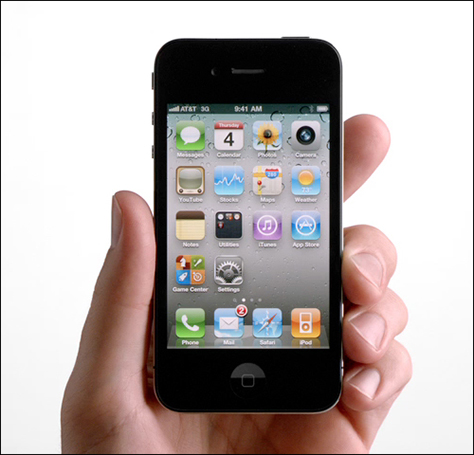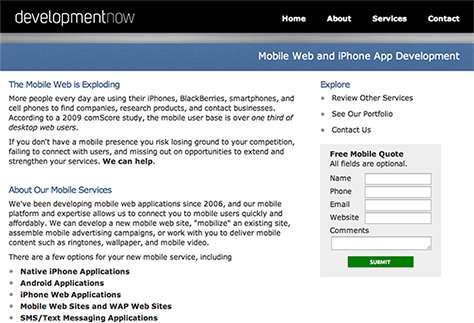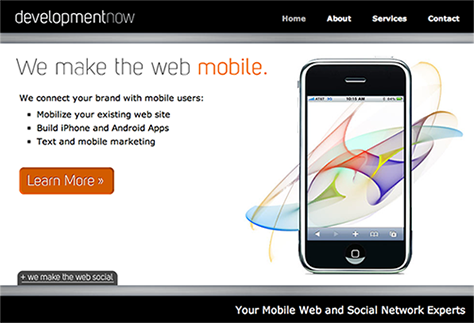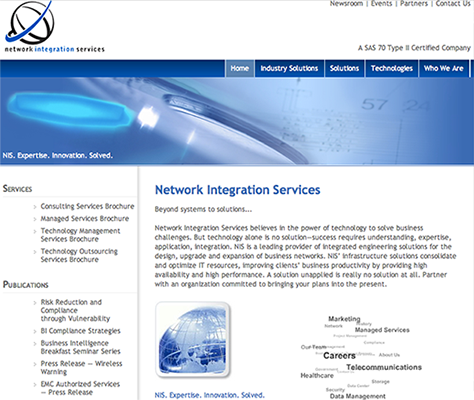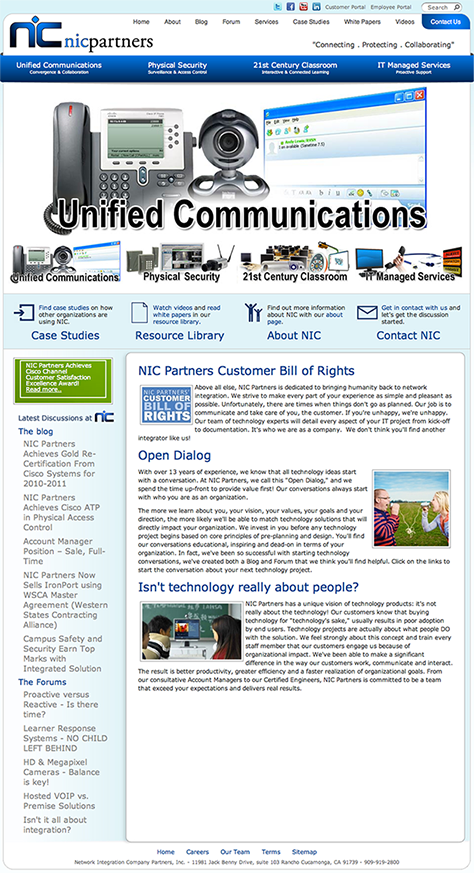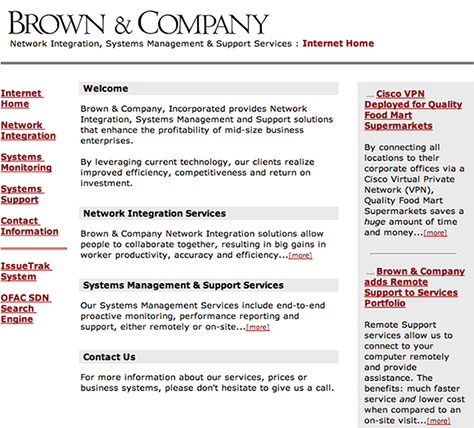Purchase Psychology: Providing Motivation
What drives consumers to purchase any product or service? They do so for a reason that is tied to an emotion—their reason, not yours. At first glance, this idea may seem foreign or confusing. However, it is 100% accurate. Human psychological theories abound and have many different focuses. Everything we’ve learned about human motivation—from the radical behaviorism of B. F. Skinner to Abraham Maslow’s Hierarchy of Needs to Richard Lazarus’s cognitive theories, makes one thing apparent: people act when what they see, read, hear, or feel motivates them to do so. So, why do most Web sites ignore these motivating factors? The reasons vary, but it is primarily due to the fact that most people who create written content for Web sites have no training in using persuasive language.
Persuasion, in the form of providing motivation, can be as simple as an ego stroke—appealing to a person’s self-image or desire for success. Here’s an example from a business setting: A department manager purchases new software so her company can remain competitive. With this purchase, the department manager has perhaps helped her company keep up with the times, be more responsive to its customers, and made the lives of her staff easier and more manageable. But most important, because she has answered the division manager’s demands for a higher degree of customer-relationship management, she gets to keep her job.
Among the many emotions that drive decision making—including purchases—are worry, pride, curiosity, envy, frustration, fear, hope, love, gratitude, and disappointment. Some goals that drive buyers’ decisions include averting crisis, becoming more competitive, saving time and money, making jobs simpler and lives easier, and increasing their feeling of comfort with a major purchase. Therefore, one of the most important things to recognize in creating messages for Web sites is the need to consider the potential emotional impact on the target reader—or any reader. Listing factual information does not evoke emotions or provide motivation.
Have You Earned Your Readers’ Time?
Timing is everything. Another, no less important element of Web site content is the amount of time it takes to deliver your message. Tens of thousands of hours of research by numerous companies tell us that readers of advertising messages allow us only a very short time—with the result that we either capture their attention or repel them in confusion. On the Web, you’ve got only three to ten seconds. Of course, you cannot successfully close a sale that quickly, because doing so requires that you guide prospective customers through taking additional steps, but you can certainly end any further chance of your winning them over in that small amount of time. Sellers of products or services should not create any negative thoughts or feelings in the minds of their customers. Confusion and frustration are two such emotions. Neither provides a positive user experience.
Consider your own personal history of doing keyword searches to find a product or service on the Web. We all know there are ways to move sites up in the search engine listings that have nothing to do with the keywords we’re searching for. But ignoring the possibility of prospective customers’ landing on a totally wrong site, let’s look at what happens when they land on a right one with a poor message.
In appalling numbers, Web sites fail to inform prospective customers of how the site can help them—answering the real motivational reason for the search. In sales-speak, we refer to this as answering the WIIFM (What’s In It For Me?) question. Answering that question properly addresses prospective customers’ emotional reasons for being on a site to begin with. Until you answer that fundamental question in the minds of your prospective customers—or even your current customers who are looking for new products or services—you have not earned their time. You must earn the time customers are willing to give you to tell them why they should want do business with you and your company instead of your competitors.
Benefits Versus Features: An Old Lesson Revived
In the late 1970s, as a sales representative for Scott Paper Company, I learned how to create benefit/feature statements for consumer products. On the very first day on the job, we were taught that one does not work without the other. They still don’t. Simply defined, features are what a product or service is or does. For example, our widget comes in 24 colors, comes with a warranty, and is made of the finest quality materials. Benefits, on the other hand, describe what the product does for its user. For example, our widget will help you save time, make your staff more efficient, help you competitively, make your life easier, and prevent you from worrying about your choices. Benefits cause your customers to be more satisfied with your product and service offerings and, therefore, increase their loyalty to your company and your brand.
Today, most Web sites are factually descriptive. By that, I mean that they mainly describe what they do and who they are. Believe it or not, therein lies the basic problem. The vast majority of Web sites—and I have no hesitancy in including the Web sites of extremely prominent companies in this group—are inwardly focused, presenting facts about themselves, lists of the products and services they provide, profiles of their personnel, and corporate histories. Of course, you should not discard this information or take it lightly, because these facts support the decisions your prospects and current customers need to make. But facts and features do not motivate people to take action. They only form the basis for later rationalization.
Consumers want to know what benefits a product or service offers to them—how it will satisfy their emotional needs. The problem is not that the information these sites present is wrong, but that they’re presenting it in a manner that arouses neither the readers’ emotions nor their motivation to act—unless you count driving them to another site.
I cannot think of any more appropriate examples than the messages of two huge companies that are currently facing each other in the consumer products marketplace: Google and Apple. Droid TV commercials from Google are visually stunning, with their jewel-like Web icons on a spinning globe. But their main message seems to be “we do a lot of apps.” The latest Web and print Droid ads are quite cold and merely factual, as you can see in Figure 1.
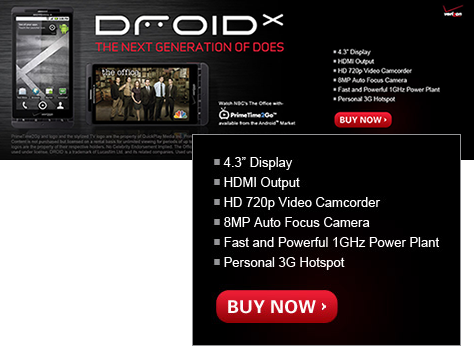
On the other hand, take a look at the iPhone TV ads![]() from Apple—or any advertising from Apple for that matter. These ads speak about the benefits of ownership and how your life will be better if you own an iPhone. The ads have highly personal appeal, are warm and inviting, and are emotionally charged. Figure 2 shows a recent iPhone ad. I grant that, in focusing on these ads’ emotional appeal, I’m ignoring the fact that Apple’s volume advertising is buying mindshare on a national scale. But look at both companies’ ads and tell me what you feel when you come away from each of them. The feeling is likely to be vastly different, as will your motivation to purchase one or the other of these products. Of course, I understand that I’m ignoring other factors in purchasing decisions like cost, connectivity, and functionality. However, the emotional response that the iPhone ads evoke is powerful enough to overcome almost any set of features a competitor might offer.
from Apple—or any advertising from Apple for that matter. These ads speak about the benefits of ownership and how your life will be better if you own an iPhone. The ads have highly personal appeal, are warm and inviting, and are emotionally charged. Figure 2 shows a recent iPhone ad. I grant that, in focusing on these ads’ emotional appeal, I’m ignoring the fact that Apple’s volume advertising is buying mindshare on a national scale. But look at both companies’ ads and tell me what you feel when you come away from each of them. The feeling is likely to be vastly different, as will your motivation to purchase one or the other of these products. Of course, I understand that I’m ignoring other factors in purchasing decisions like cost, connectivity, and functionality. However, the emotional response that the iPhone ads evoke is powerful enough to overcome almost any set of features a competitor might offer.
